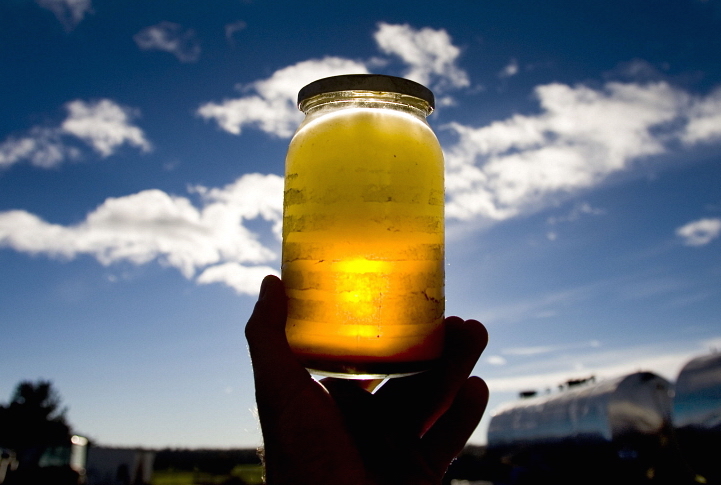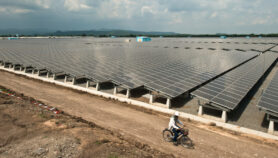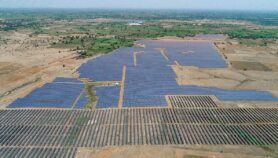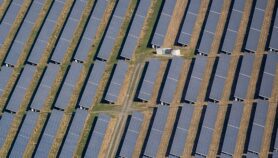By: Fatima Arkin
Send to a friend
The details you provide on this page will not be used to send unsolicited email, and will not be sold to a 3rd party. See privacy policy.
Dependent on imported fuel, Pacific islands sustain shift to renewables despite fall in oil prices, notes Fatima Arkin.
Many of the Pacific small island developing states (SIDS) are benefiting from declining global oil prices but their governments’ commitment to becoming energy independent by using renewables remains intact.
“The vast majority of Pacific islands are largely dependent on imported oil,” Dolf Gielen, director of the International Renewable Energy Agency (IRENA) Innovation and Technology Centre, tells SciDev.Net. “Lower oil prices benefit consumers so they are seeing the real benefits today.”
The price of oil has plunged from US$100 a barrel in late 2014 to below US$30 last month (15 January), the lowest level since 2003. The Pacific islands import over a billion litres of oil each year at a cost of more than US$800 million.
But renewables continue to be a priority. In 2012, renewable energy generation in Fiji was over 60 per cent and over 50 per cent in Papua New Guinea. The Paris climate agreement last December further acknowledged the need for enhanced deployment of renewables in the SIDS.
Here are some of the reasons why the gloomy state of the oil industry is not putting a damper on investments in renewables.
Diversifying energy uses
The use of oil as a fuel for power generation has decreased substantially over the past few decades. Oil now accounts for less than five per cent of the global electricity supply, down from 25 per cent in 1973, according to the International Energy Agency (IEA).
Oil remains predominantly used for transportation. In 2011, transport accounted for over 60 per cent of global oil consumption, according to the IEA. In the Pacific SIDS, 75 per cent of fuel imports now go towards transportation, which is completely dependent on petroleum products.
Gielen acknowledges that recent reductions in oil prices could impact investors’ immediate interest in alternatives such as liquid biofuels, natural gas fuelled cars and electric and hybrid vehicles. But he says the development phase of many alternative biofuels, including infrastructure and research and development, makes them less vulnerable to short-term fluctuations in global oil prices. A big issue is that foreign assistance doesn’t favour transportation.
According to a 2013 report of IRENA, most of the foreign assistance to the Pacific is directed towards substituting fossil fuels with renewables for power generation because of the centralised nature of generation, which makes it a lot easier to implement and evaluate fuel saving programmes. [1]
“The highly fragmented and diverse nature of energy use for transport has made it very difficult to create programmes that can clearly demonstrate substantial import energy savings and carbon emission reductions in the islands,” says the report.
Renewables generate electricity
Renewables are used mainly to generate electricity. The more important issue when it comes to renewables is not the price of oil but the price of electricity, and the latter is not solely based on the cost of fuel, says Scott Nyquist, an expert on sustainability at the consulting firm McKinsey. The cost of maintaining the electrical grid is expensive and in some markets, gas is linked to the price of oil. [2]
Still, the need to address critical issues such as climate change ensures that renewables continue to shine. The very existence of the SIDS is threatened by rising sea levels and biodiversity loss, which has caused the SIDS governments to declare ambitious renewable energy targets to reduce greenhouse gas emissions. In 2013, the SIDS, along with Australia and New Zealand, signed the Majuro declaration for climate leadership, which called for an “energy revolution”.
Renewables also figured prominently in the SIDS’ Intended Nationally Determined Contributions (INDCs), which are plans outlining how and by how much each country plans to reduce their carbon outputs that were submitted in advance of the Paris climate talks last December. In their INDCs, several of the SIDS, such as Papua New Guinea and Fiji, aim to “be or approach 100 per cent renewable energy by 2030”. The details remain hazy but the intent is clear.
Science has made renewables cheaper and more accessible. 3-D printers can now produce solar cells that are flexible and easy to transport. Perhaps most notably, storage is improving and investments in the field are rising. The main hurdle to the widespread adoption of non-hydro renewables is that they can’t be saved for the evening or rainy days.
But there has been considerable progress in the production of high-capacity, low-cost lithium ion batteries. The Asia-Pacific region is expected to see the highest growth in advanced batteries for utility scale applications over the next ten years, according to a recent report from the technology research firm Navigant Research. [3]
Volatile oil prices
When it comes to the Pacific islands’ oil consumption, one of the main challenges is overcoming uncertainty with long-term pricing.
“History tells us that oil prices are volatile and will surely go up again,” John Holmes, a senior research fellow in environmental policy at Oxford University and co-leader of the Smart Villages initiative, tells SciDev.Net. “Any long-term view will value the cost certainty provided by renewables — with known up front capital costs and relatively low operating costs — against the unknown future costs of oil-based energy.”
Renewables also enhance diversity in the Pacific islands’ energy mix, which helps build up the region’s energy security.
In 2012, 17 of the 22 power utilities in Pacific states relied on fossil fuel to meet 98 per cent of their electricity demand, Solomone Fifita, head of the energy programme at the economic development division of the Secretariat of the Pacific Community, tells SciDev.Net.
“A lot has been done, some progress made and there is a lot of interest from many partners, etcetera, but there is still a long way to go,” he says. “Small islands, big issues.”
This piece was produced by SciDev.Net’s South-East Asia & Pacific desk.
References
[1] International Renewable Energy Agency Pacific lighthouses: Renewable energy roadmapping for islands (August 2013)
[2] Scott Nyquist Lower oil prices, but more renewables: What’s going on? (McKinsey & Company, June 2015)
[3] Navigant Research Market Data: Advanced batteries for utility-scale energy storage (First Quarter 2016)














